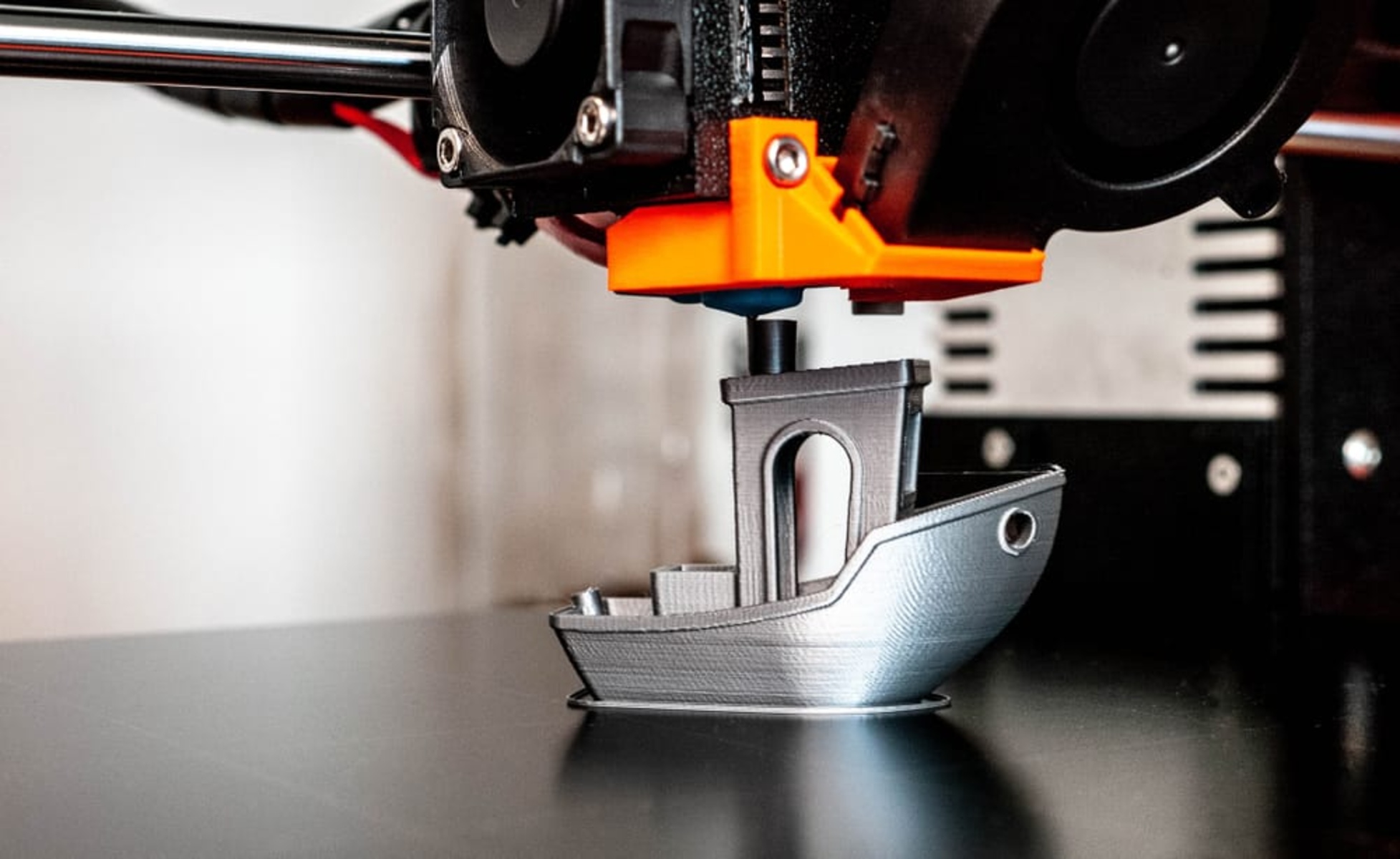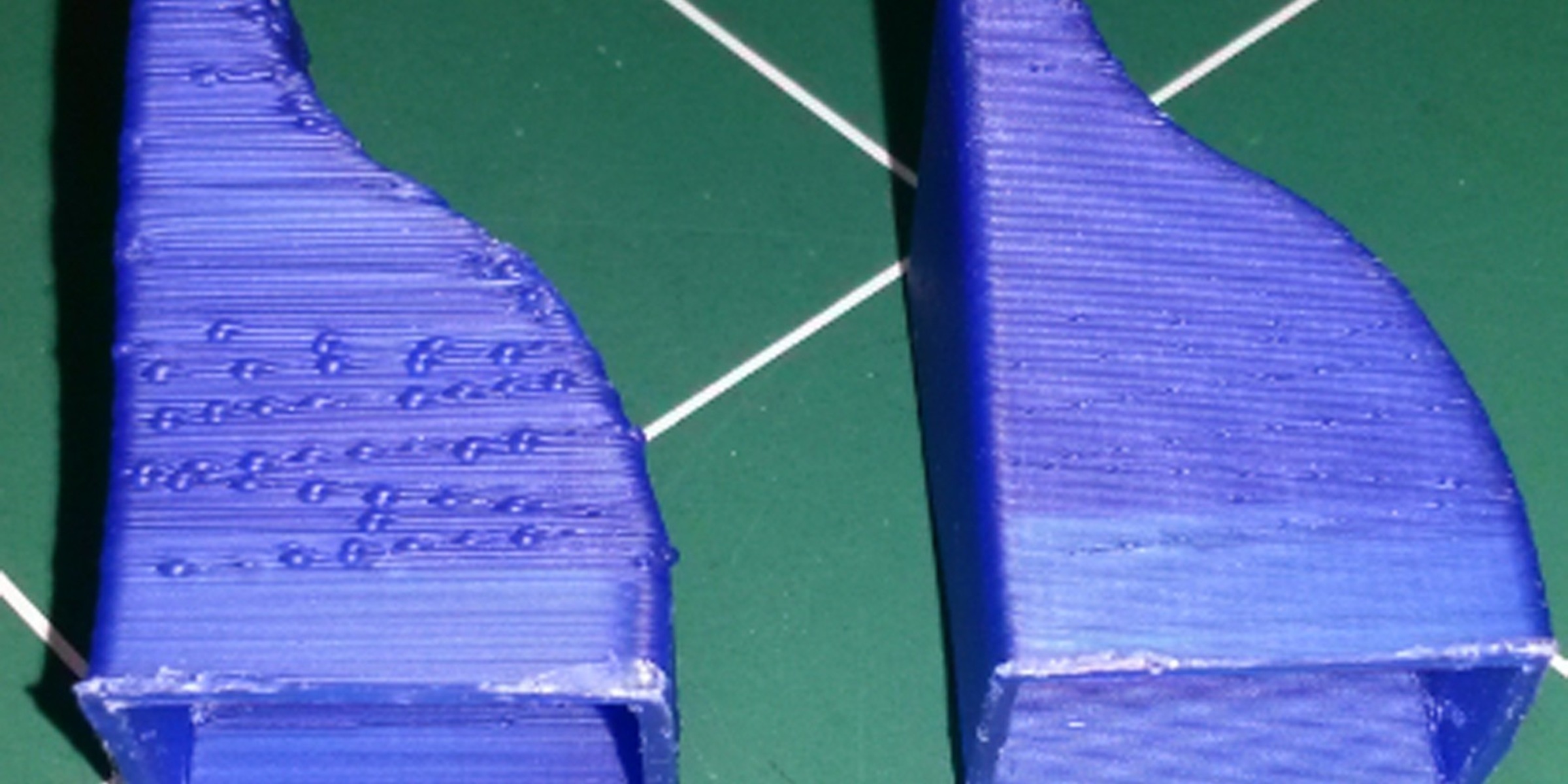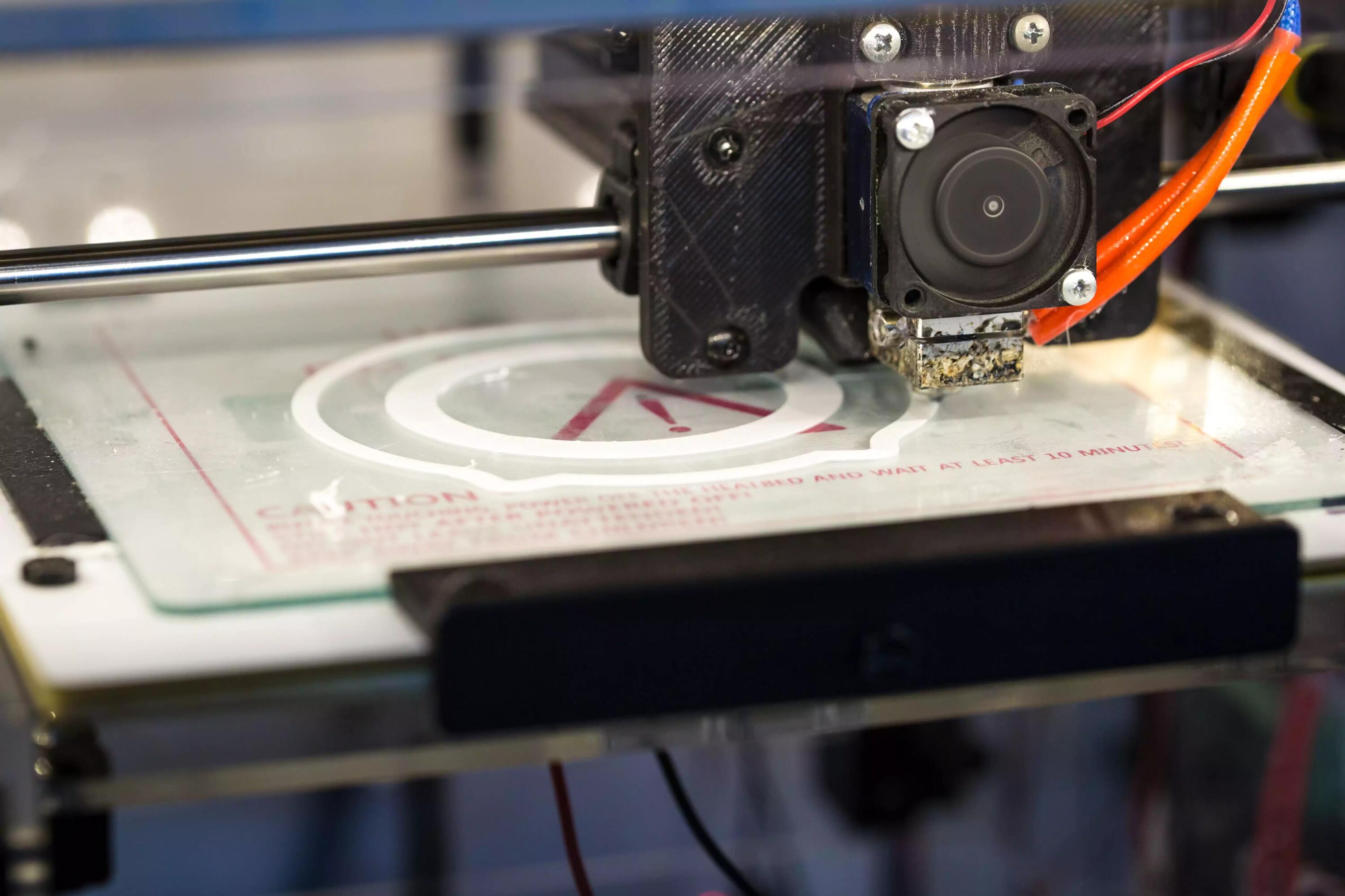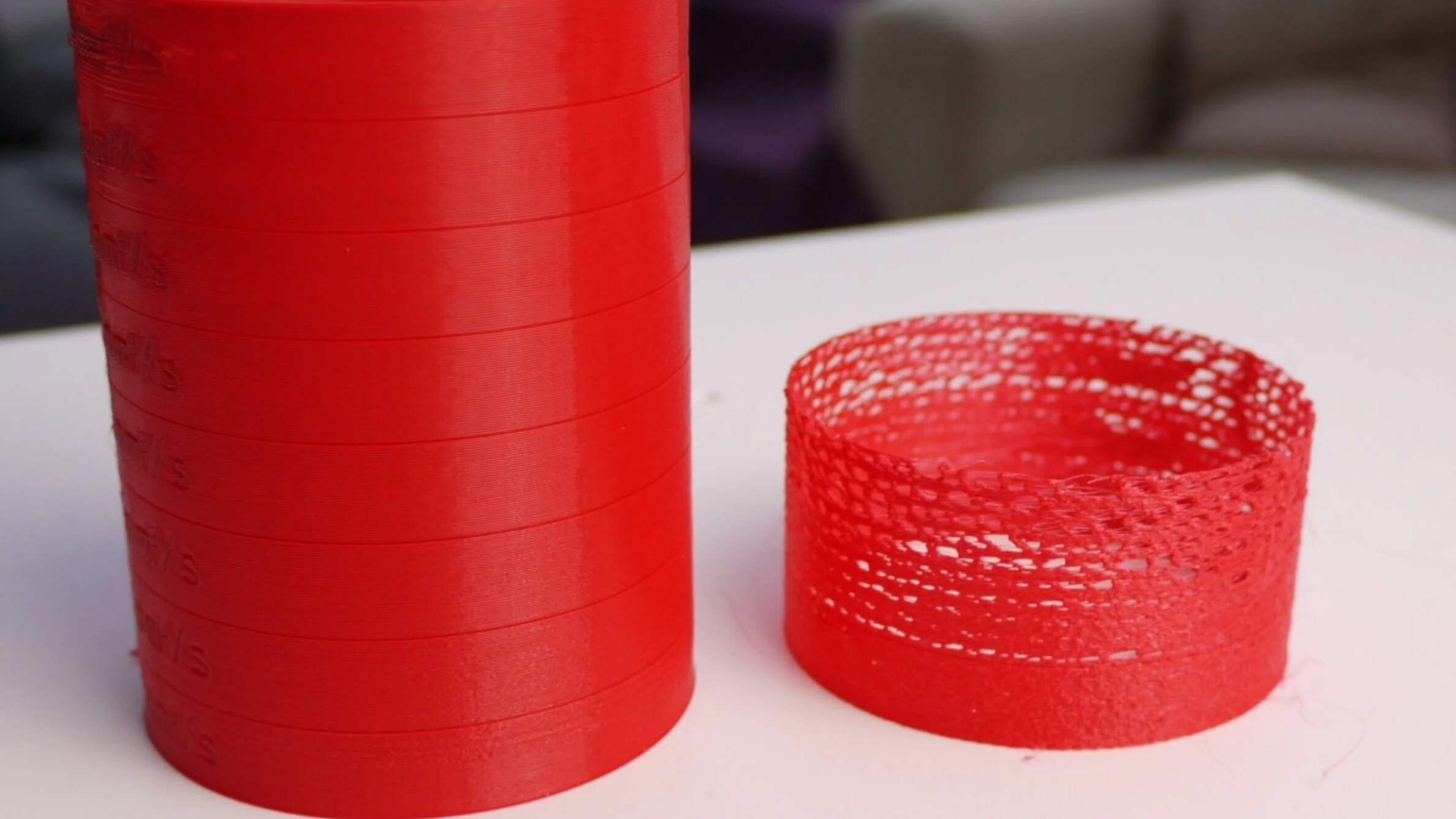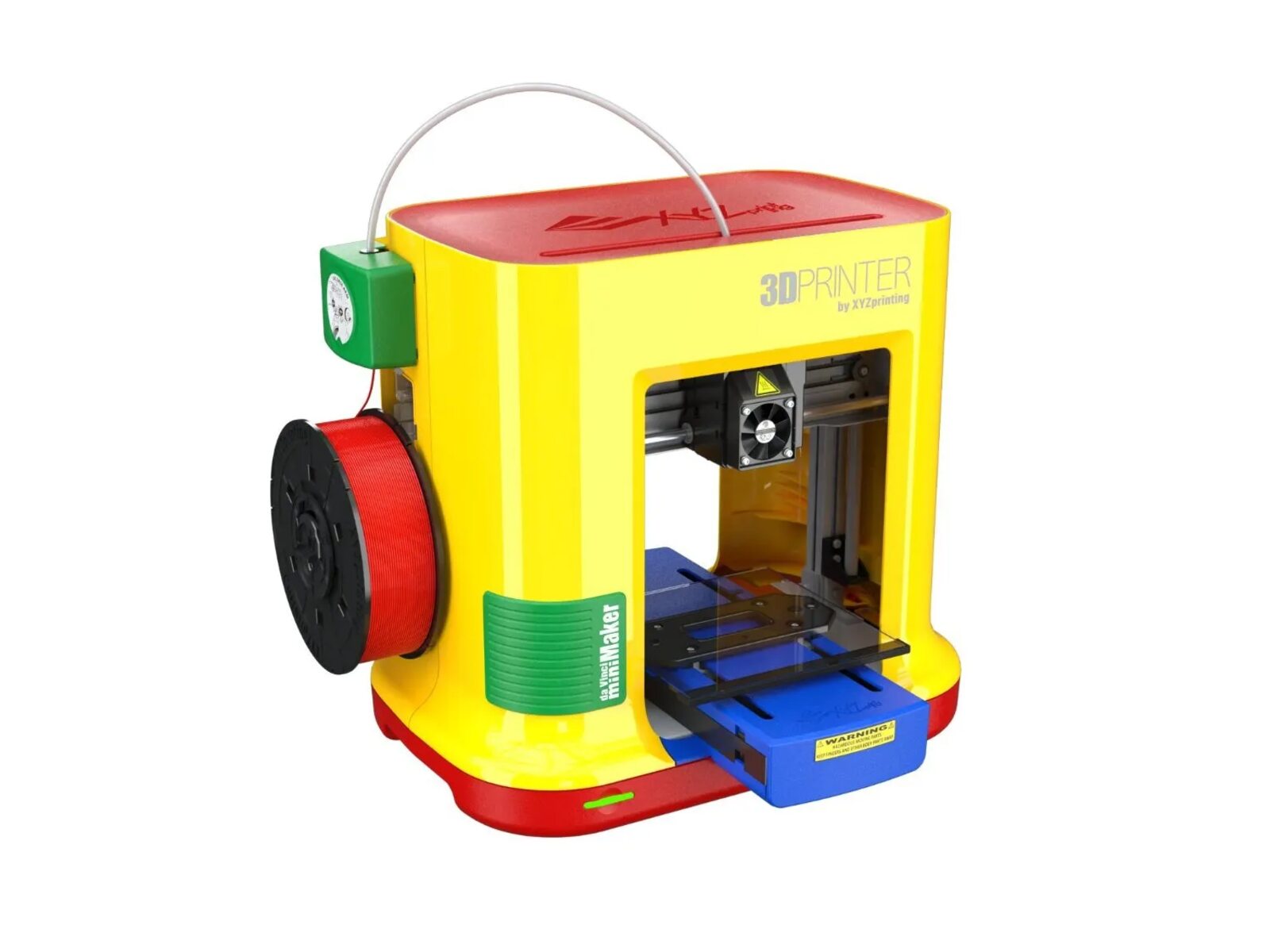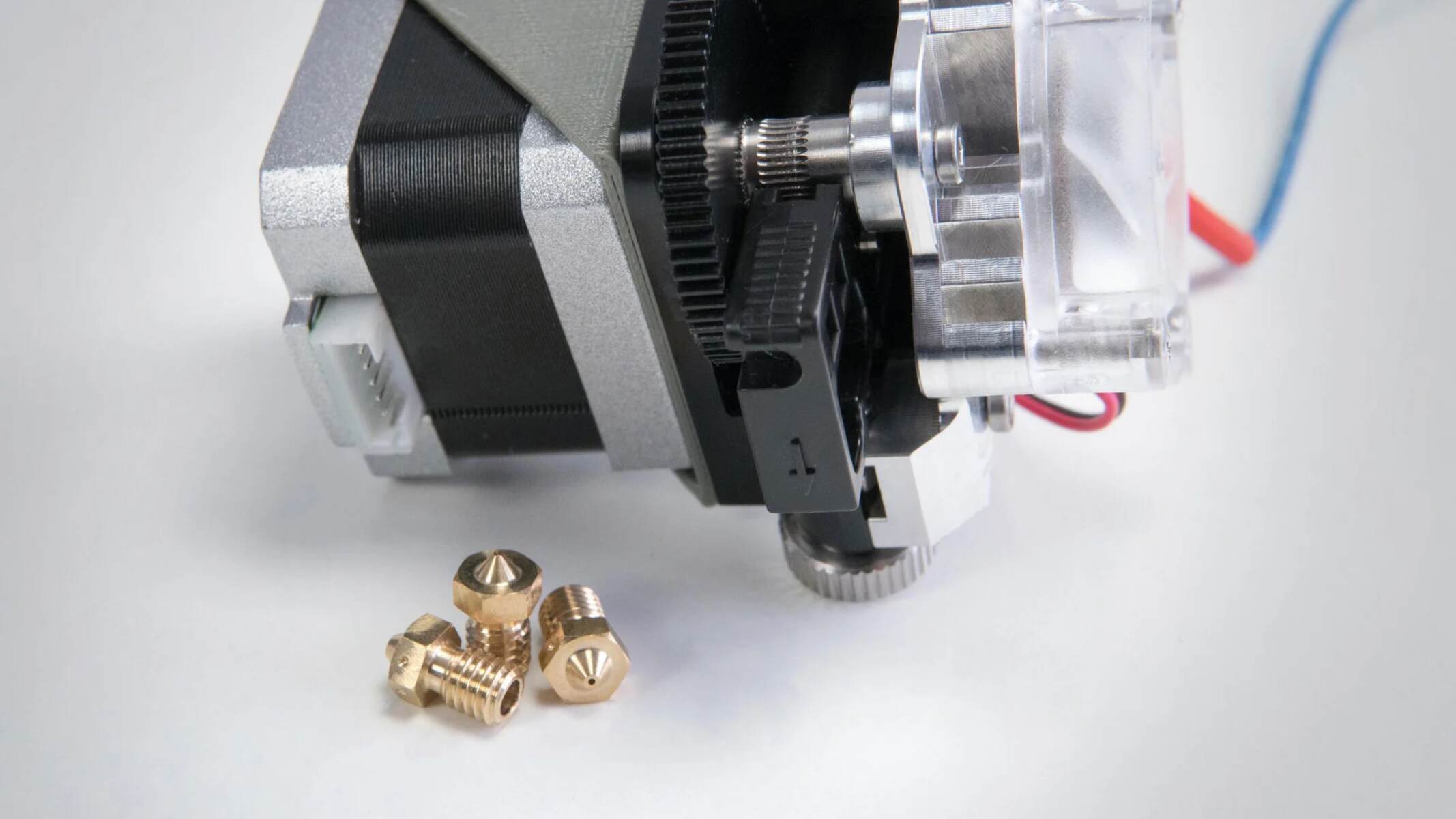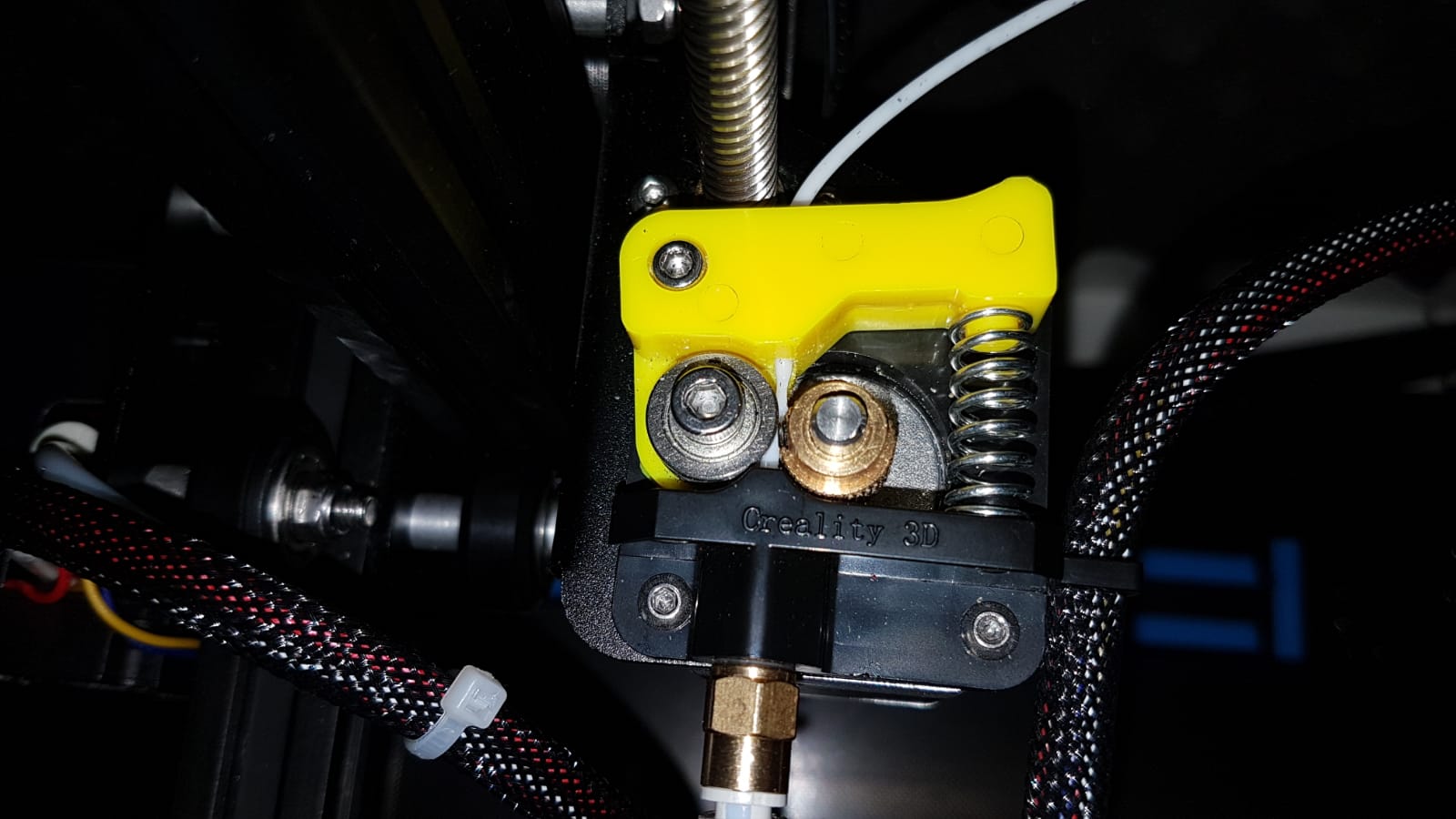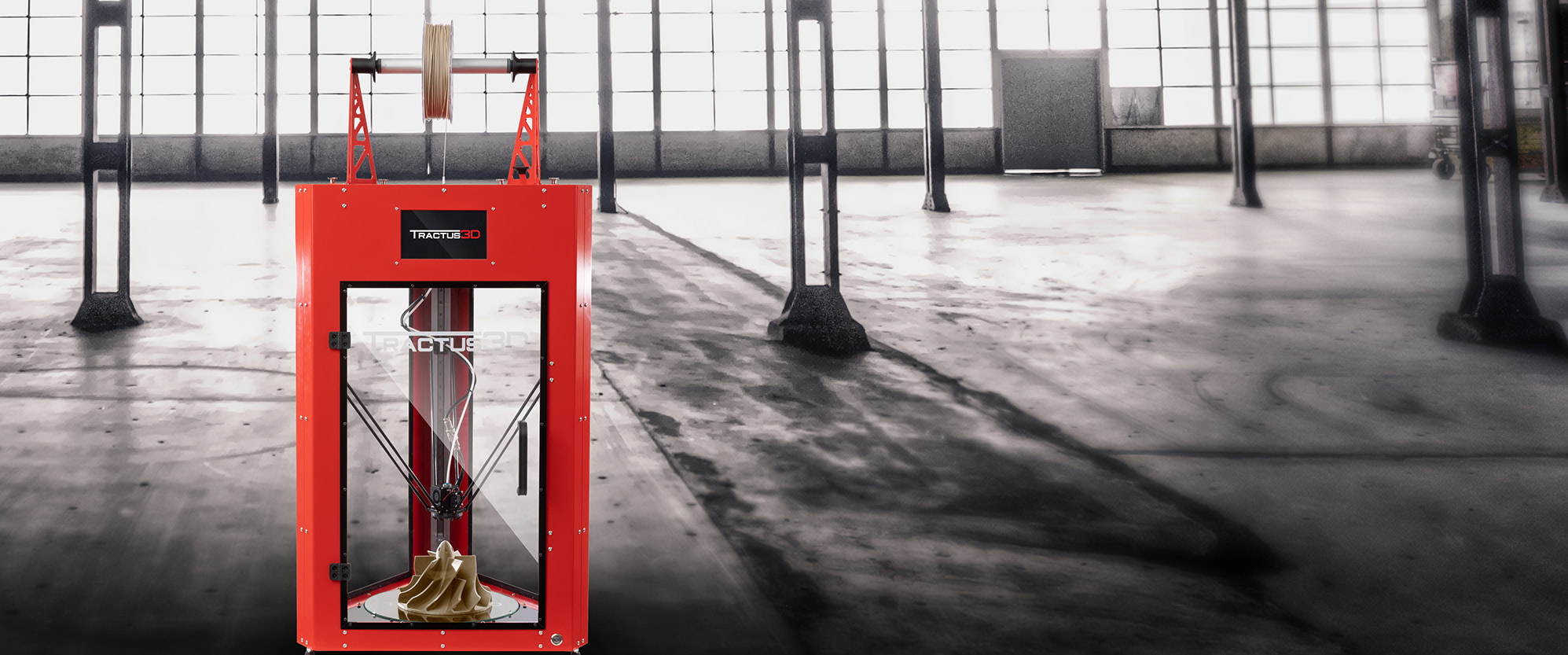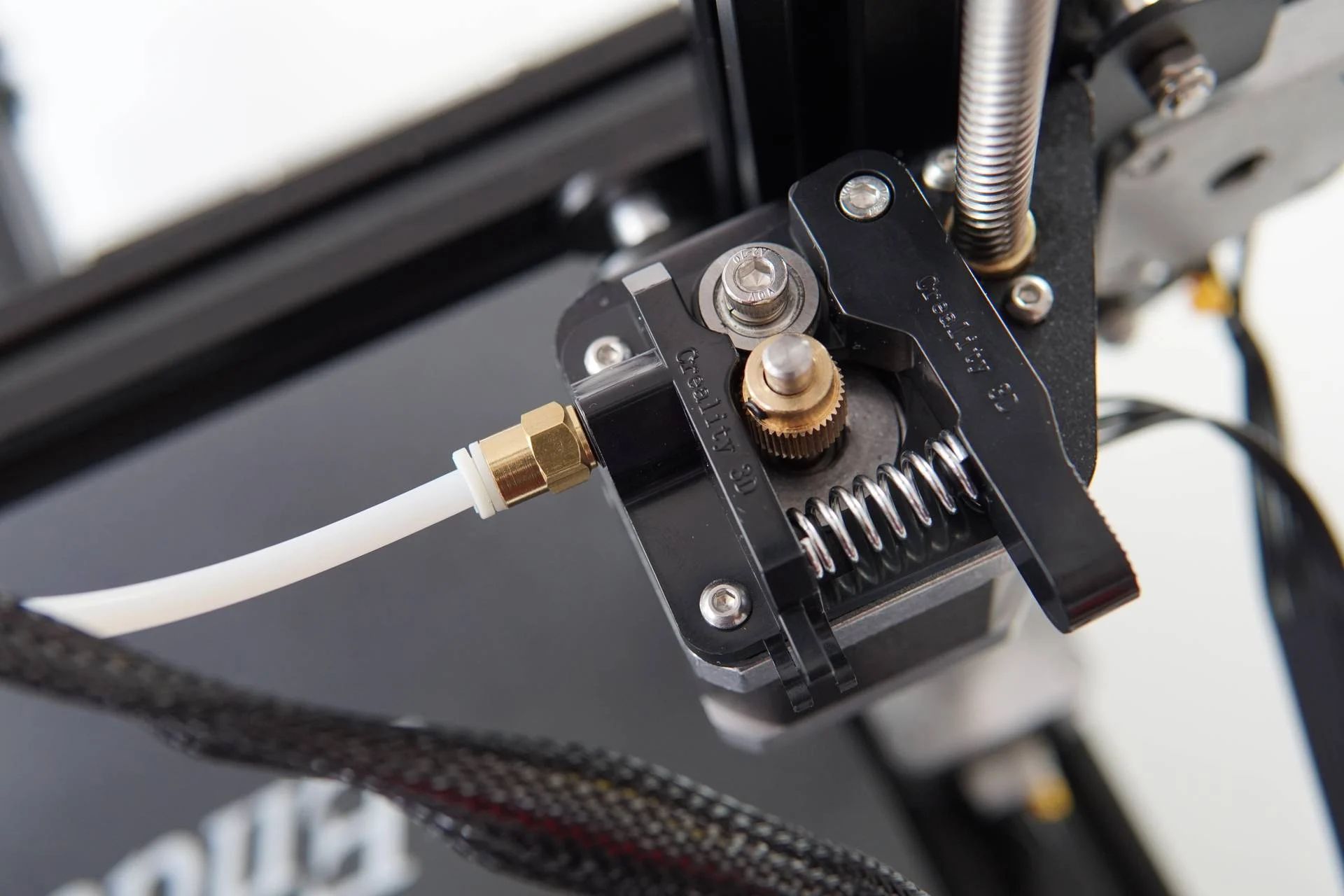Introduction
3D printing has revolutionized the manufacturing industry in recent years, offering an innovative approach to producing three-dimensional objects. Within the realm of 3D printing, extrusion is one of the most commonly used techniques. It involves the deposition of molten material layer by layer to create intricate and complex structures. Understanding the fundamentals of extrusion in 3D printing is crucial for anyone seeking to explore the capabilities and potential of this technology.
In simple terms, extrusion in 3D printing refers to the process of pushing a filament material through a heated nozzle, which then melts and deposits the material in precise patterns to build up a three-dimensional object. This method offers flexibility and versatility, making it suitable for a wide range of applications, from prototyping to manufacturing final products.
Extrusion-based 3D printing systems consist of several key components, including the filament, extruder, heated bed, and control system. The quality of the extruded material plays a crucial role in determining the overall print quality, making filament selection a critical factor in achieving desired results.
Factors such as temperature, nozzle size, print speed, and layer height all influence the quality of the extrusion process. It is crucial to fine-tune these settings to ensure proper adhesion between layers and accurate deposition of the material.
While extrusion-based 3D printing offers numerous advantages, such as cost-effectiveness and accessibility, it does have limitations. Large-scale objects may present challenges due to warping and print time, and achieving highly intricate designs may require additional post-processing techniques.
Despite these limitations, extrusion in 3D printing has found applications in various industries, including automotive, aerospace, healthcare, and consumer goods. Its ability to rapidly create customized parts, prototypes, and functional objects has made it a valuable tool in modern manufacturing.
In this article, we will delve deeper into the world of extrusion in 3D printing, exploring its definition, working principles, components, filament types, factors affecting extrusion quality, troubleshooting common issues, and its advantages and limitations. Additionally, we will explore the diverse applications where extrusion-based 3D printing has made its mark.
Definition of Extrusion in 3D Printing
Extrusion is a fundamental process in 3D printing, specifically in the context of fused deposition modeling (FDM) or fused filament fabrication (FFF). It involves the controlled deposition of molten material through a heated nozzle onto a build platform, layer by layer, to create a three-dimensional object.
The process begins with a solid filament material, typically made of thermoplastics such as ABS (Acrylonitrile Butadiene Styrene) or PLA (Polylactic Acid). The filament is fed into an extruder, a device that heats and melts the material to a semi-fluid state. As the filament passes through the extruder, it is pushed through a nozzle with a specific diameter, which determines the width of the material being extruded.
Once the filament reaches the nozzle, it is heated to its melting temperature, causing it to become molten. The molten material is then extruded out of the nozzle in precise patterns, controlled by the movement of the print head or the build plate. As each layer is deposited, it quickly solidifies, forming a strong bond with the previous layers.
The deposition of layers continues until the entire object is formed. The process is guided by a digital 3D model, which is sliced into multiple layers using 3D slicing software. Each layer is then converted into a set of instructions that dictate the movement and extrusion of the material to achieve the desired shape and structure.
Extrusion-based 3D printing offers significant advantages due to its simplicity and accessibility. It allows users to create intricate designs with relative ease and versatility, making it suitable for various applications, ranging from prototyping to custom manufacturing. The ability to use a variety of filaments, including specialty materials with unique properties, further enhances the capabilities of extrusion-based 3D printing.
Overall, extrusion in 3D printing is a process that enables the transformation of digital designs into physical objects by precisely depositing molten material layer by layer. Its accessibility, flexibility, and wide range of applications have made it a popular choice among hobbyists, professionals, and industries seeking to harness the power of additive manufacturing.
How Extrusion Works
Extrusion in 3D printing operates on a simple yet effective principle. The process begins with loading a solid filament material into the 3D printer’s extruder system. The filament is typically stored on a spool and fed through a tube to the extruder assembly. Inside the extruder, the filament passes through a motor-driven gear system, which guides it towards a heated nozzle.
The extruder assembly consists of a heating element that heats the nozzle to a specific temperature, typically around the melting point of the filament material. As the filament enters the heated zone, it undergoes thermal processing and begins to melt. The molten filament is then pushed through the nozzle, which determines the diameter of the filament being extruded. This nozzle is attached to the printer’s print head or gantry system, allowing precise movement across the build platform.
Once the molten filament exits the nozzle, it is carefully deposited onto the build platform in a precise pattern, layer by layer. The printer’s control system coordinates the movement of the print head, the extrusion of the material, and the overall construction of the object based on the instructions provided by the 3D model. The controlled deposition of the molten material ensures accurate reproduction of the intended design.
As each layer of molten material is deposited, it quickly cools down and solidifies. This solidification process is essential for maintaining the structural integrity of the printed object and ensuring strong layer adhesion. The cooling can happen naturally through air circulation or be expedited using cooling fans, depending on the material being used.
Throughout the printing process, it is crucial to maintain optimal conditions to ensure successful extrusion. Factors such as temperature, print speed, layer height, and filament quality play a significant role. The temperature must be carefully controlled to keep the filament at its ideal melting point, while the print speed and layer height must be adjusted to achieve the desired level of detail and surface finish.
By repeating the process of layer-by-layer deposition, the 3D printer gradually builds up the object according to the specifications of the digital design. Once the printing is complete, the printed object may require post-processing, such as removing support structures or surface finishing techniques, to achieve the desired final appearance and functionality.
Overall, the extrusion process in 3D printing is a precise and controlled method of transforming solid filament material into a three-dimensional object layer by layer. With the advancements in technology and material options, extrusion-based 3D printing continues to evolve, enabling new possibilities in product development, prototyping, and manufacturing.
Components of an Extrusion-based 3D Printer
An extrusion-based 3D printer consists of several integral components that work together to transform digital designs into physical objects. These components ensure precise filament feeding, controlled heating, and accurate deposition of the molten material.
1. Extruder: The extruder is responsible for feeding the filament into the printer and melting it for extrusion. It typically comprises a motor-driven gear system that grips the filament and pushes it through a heated nozzle. Some printers may also feature dual extruders for multi-color or multi-material printing.
2. Nozzle: The nozzle is a critical component that determines the diameter of the extruded filament and plays a significant role in defining the level of detail in the printed object. Nozzles with different sizes can be interchangeable, allowing for customization depending on the desired result.
3. Heated Bed: The heated bed provides a stable and controlled temperature for the build platform, ensuring proper adhesion of the printed object to the surface. It helps prevent warping and curling by keeping the initial layers of the printed object warm during the printing process.
4. Print Head or Gantry System: The print head, or gantry system, is responsible for the movement of the extruder and the precise positioning of the nozzle during the printing process. It ensures accurate layer deposition and allows the printer to create complex geometries as instructed by the 3D model.
5. Filament Spool and Filament Sensor: The filament spool holds the filament material, typically in a continuous length wound around the spool. It serves as the source for feeding the filament to the extruder. Some printers are equipped with filament sensors that detect whether the spool has sufficient filament to complete the print job, helping to prevent print failures due to filament depletion.
6. Control System: The control system is the brain of the 3D printer, managing the printer’s operation and movements. It interprets the instructions from the 3D slicing software and controls the extruder temperature, print head movement, and other parameters essential for successful printing.
7. Display and User Interface: Many 3D printers feature a display and user interface, allowing users to interact with the printer, navigate settings, and monitor the printing progress. The interface may include buttons, touchscreens, or even connectivity options for remote monitoring and control.
These components form the backbone of an extrusion-based 3D printer, working together to transform digital designs into tangible objects. As 3D printing technology continues to advance, these components are being refined and enhanced to improve printing precision, reliability, and ease of use.
Types of Filaments Used in Extrusion-based 3D Printing
Extrusion-based 3D printing offers a wide range of filament options, each with its own unique properties and applications. The choice of filament material plays a crucial role in determining the strength, flexibility, durability, and aesthetics of the printed object. Here are some popular types of filaments used in extrusion-based 3D printing:
1. PLA (Polylactic Acid): PLA is one of the most commonly used filaments due to its ease of use and biodegradability. It is derived from renewable resources such as cornstarch or sugarcane and is available in a wide array of colors. PLA is suitable for a range of applications, including prototyping, educational projects, and models that do not require extreme mechanical strength.
2. ABS (Acrylonitrile Butadiene Styrene): ABS is a versatile filament known for its durability and impact resistance. It has a higher melting point than PLA, making it suitable for objects requiring higher temperature resistance. ABS is commonly used in functional prototypes, automotive parts, and electronic enclosures.
3. PETG (Polyethylene Terephthalate Glycol): PETG filaments combine the strength of ABS with the ease of use of PLA. They offer good impact resistance, chemical resistance, and temperature stability. PETG is often used in mechanical parts, containers, and displays that require durability and clarity.
4. Nylon (Polyamide): Nylon filaments are known for their excellent strength, flexibility, and impact resistance. They offer high tensile strength and low friction, making them suitable for functional prototypes, gears, and parts requiring wear resistance. Nylon filaments do require specific printing conditions, such as a heated chamber, to ensure proper adhesion and prevent warping.
5. TPU (Thermoplastic Polyurethane): TPU is a flexible filament known for its elasticity and resistance to abrasion. It can be stretched and bent without losing its shape and is often used for creating wearable items, phone cases, and soft-touch components.
6. Specialty Filaments: In addition to the commonly used filaments mentioned above, there are various specialty filaments available that offer unique properties. These include carbon fiber-infused filaments for added strength, wood and metal composite filaments for a natural finish, and conductive filaments for electronics prototyping.
When selecting a filament for a specific project, it is important to consider the desired strength, flexibility, aesthetic qualities, and any functional requirements. Each filament type may have specific printing parameters, such as nozzle temperature, print speed, and cooling settings, that need to be optimized for successful printing.
The evolving field of 3D printing continues to introduce new filament materials and composites, expanding the possibilities for extrusion-based 3D printing and offering users a wide range of options to bring their designs to life.
Factors Affecting Extrusion Quality
The quality of extrusion in 3D printing plays a vital role in determining the overall outcome of a printed object. Several factors can influence the extrusion quality, and understanding these factors is essential for achieving accurate and high-quality prints. Here are some key factors that can affect extrusion quality:
1. Temperature: The temperature of the extruder and the heated bed significantly impacts the quality of the extrusion process. Each filament material has a specific recommended temperature range for optimal melting and flow. Deviating from these temperature ranges can result in under-extrusion or over-extrusion, affecting the structural integrity and surface finish of the printed object.
2. Nozzle Size: The size of the nozzle determines the diameter of the filament being extruded. Smaller nozzles can achieve finer details but may impact print speed, while larger nozzles can extrude more material at once but sacrifice fine detail. Choosing the appropriate nozzle size for a specific print can affect the overall print quality.
3. Print Speed: The speed at which the print head or gantry moves during printing can impact extrusion quality. Fast print speeds may result in inadequate material deposition, causing gaps and weak adhesion between layers. Slower print speeds allow for better control and more precise extrusion, improving the overall print quality.
4. Layer Height: The layer height determines the thickness of each layer in a printed object. Smaller layer heights yield finer details but increase print time. Larger layer heights reduce print time but may sacrifice surface quality. Finding the right balance between layer height and desired print quality is crucial for achieving optimal extrusion results.
5. Filament Quality: The quality of the filament material itself can significantly impact extrusion quality. Filament inconsistencies, such as diameter variations or impurities, can cause inconsistent extrusion, leading to irregularities in the printed object. It is important to use high-quality filaments from reputable manufacturers to ensure consistent and reliable extrusion.
6. Calibration and Leveling: Proper calibration of the printer and precise leveling of the build plate are essential for achieving accurate extrusion. Incorrect calibration or leveling can lead to uneven material deposition, warping, or adhesion issues. Regular maintenance and calibration checks are necessary to ensure consistent extrusion quality.
7. Bed Adhesion and Support Structures: Adequate bed adhesion is crucial for preventing warping and ensuring stable print foundations. Utilizing proper bed preparation techniques, such as using adhesives, heated beds, or specialized bed materials, can help improve bed adhesion. Additionally, optimizing the use of support structures for complex designs can ensure successful extrusion and prevent print failures.
By carefully considering and optimizing these factors, 3D printer users can achieve higher-quality prints with accurate dimensions, fine details, and reliable structural integrity. Experimentation and continuous fine-tuning of these variables are necessary to achieve optimal extrusion quality for different print projects.
Common Issues and Troubleshooting in Extrusion
While extrusion-based 3D printing offers numerous possibilities, it is not uncommon to encounter issues during the printing process. Understanding common problems and their potential solutions is essential for troubleshooting and achieving successful extrusion. Here are some common issues that may arise during extrusion and tips for resolving them:
1. Under-Extrusion: Under-extrusion occurs when the printer fails to extrude enough material, resulting in gaps or thin layers. To resolve this issue, check the filament feed and ensure it is properly aligned and not tangled. Verify the nozzle temperature and adjust if necessary, as low temperatures can cause inadequate melting and extrusion. Additionally, check for clogs in the nozzle and clean it if needed.
2. Over-Extrusion: Over-extrusion happens when the printer deposits too much material, causing excessive bulging or uneven layers. To address this issue, ensure that the printer’s extrusion multiplier or flow rate is properly calibrated. Adjust the printing temperature to avoid excessive melting and make sure the nozzle is clean and clear of any obstructions.
3. Stringing and Oozing: Stringing occurs when excess filament creates thin, unwanted strands between different parts of the printed object. To mitigate stringing, reduce the printing temperature and adjust retraction settings to pull the filament back when it is not being extruded. Increasing travel speed and using a cooling fan can also help reduce stringing and oozing.
4. Warping and Adhesion Issues: Warping refers to the deformation or lifting of printed objects from the build platform. To minimize warping, ensure the print bed is properly leveled and clean. Additionally, using adhesives like glue sticks or applying a heated bed can improve bed adhesion. Utilizing a brim or raft can also assist in improving adhesion, especially for larger prints with a larger surface area.
5. Layer Shifts: Layer shifts occur when the printed object shifts horizontally or vertically during the printing process. This issue is often brought about by mechanical issues, such as loose belts or incorrect stepper motor settings. Check that all mechanical components are securely tightened and properly calibrated to reduce the likelihood of layer shifts.
6. Clogs: Nozzle clogs can impede the extrusion process, leading to inconsistent flow or no extrusion at all. To address clogs, first ensure that the print temperature is appropriate for the filament being used. If a clog occurs, try manually extruding filament or using a cleaning filament to clear the blockage. It may also be necessary to clean or replace the nozzle if the clog persists.
7. Printing Speed and Quality: Adjusting the printing speed, layer height, and resolution can significantly impact the overall print quality. Slower print speeds and lower layer heights generally result in finer details and improved surface quality. Experimenting with various settings can help achieve the desired balance between printing speed and print quality.
When troubleshooting extrusion issues, it is important to approach the problem systematically, checking one variable at a time to identify the root cause. Consulting the printer’s user manual or seeking advice from the manufacturer or online communities can also provide valuable insights and solutions for specific extrusion-related challenges.
Advantages and Limitations of Extrusion-based 3D Printing
Extrusion-based 3D printing, also known as fused deposition modeling (FDM) or fused filament fabrication (FFF), offers several advantages that have contributed to its popularity among professionals and hobbyists. However, it also has certain limitations that should be taken into consideration. Let’s explore the advantages and limitations of extrusion-based 3D printing:
Advantages:
1. Cost-effective: Extrusion-based 3D printing is relatively more affordable compared to other additive manufacturing technologies. It requires minimal equipment, and filaments are generally affordable, making it accessible to a wide range of users.
2. Accessibility: Extrusion-based 3D printers are widely available and straightforward to use. They are suitable for beginners and enthusiasts who want to explore the world of 3D printing without extensive expertise or specialized skills.
3. Versatility in Material Selection: Extrusion-based 3D printers can utilize a wide variety of filament materials, ranging from common plastics like PLA and ABS to more specialized materials like TPU and wood composites. This versatility allows for a broad range of applications and properties for printed objects.
4. Rapid Prototyping: Extrusion-based 3D printers excel in rapid prototyping, enabling faster iteration and design validation. It allows for quick and cost-effective production of prototypes, reducing the time and resources required for traditional manufacturing methods.
5. Customization and Complexity: The layer-by-layer deposition process of extrusion-based 3D printing allows for intricate designs, complex geometries, and customization. It enables the creation of objects with intricate internal structures and features that may be challenging or impossible with other manufacturing methods.
Limitations:
1. Limited Resolution: Extrusion-based 3D printing typically offers lower resolution compared to other technologies like stereolithography (SLA) or digital light processing (DLP). The layering effect may result in visible layer lines and decreased surface smoothness.
2. Print Speed: Extrusion-based 3D printing is generally slower compared to other 3D printing methods. The layer-by-layer approach and the need for material to cool and solidify between layers contribute to longer print times, which may not be suitable for urgent or high-volume production needs.
3. Size Limitations: The build volume of extrusion-based 3D printers can be a constraint, particularly for larger-scale or oversized objects. Printers with larger build volumes can be more expensive and may require additional calibration to maintain print quality across the entire build area.
4. Support Structures and Post-processing: Designs with overhangs or complex geometries often require support structures during printing. These structures need to be removed and post-processed manually, adding extra time and effort to the printing process.
5. Mechanical Strength: The layered nature of extrusion-based 3D printing can result in anisotropic properties, meaning the printed objects may have different mechanical strengths in different directions. This limitation should be considered in applications where strict mechanical properties are critical.
Despite these limitations, extrusion-based 3D printing continues to be a versatile and accessible technology with numerous applications across various industries. Advancements in materials and printer technology continue to address some of these limitations, further expanding the possibilities of extrusion-based 3D printing.
Applications of Extrusion-based 3D Printing
Extrusion-based 3D printing has found widespread use in various industries due to its versatility, cost-effectiveness, and ease of use. It has revolutionized traditional manufacturing processes and opened up new possibilities for design, customization, and rapid prototyping. Here are some key applications of extrusion-based 3D printing:
1. Prototyping and Product Development: One of the primary applications of extrusion-based 3D printing is rapid prototyping. It allows designers and engineers to quickly create physical prototypes to test form, fit, and function. This accelerates the product development cycle, saves time and cost compared to traditional prototyping methods, and facilitates iterative design improvements.
2. Customized Manufacturing: Extrusion-based 3D printing offers the ability to create customized products tailored to individual needs and preferences. From personalized consumer products like phone cases and jewelry to prosthetics and orthotics, 3D printing enables the production of unique, one-of-a-kind items.
3. Education and Research: Extrusion-based 3D printing is widely used in educational institutions to promote STEAM (Science, Technology, Engineering, Art, and Mathematics) education. It allows students to bring their ideas to life, learn about design principles, and explore advanced manufacturing concepts. It also plays a crucial role in research, aiding scientists and engineers in studying and developing new materials, structures, and technologies.
4. Architecture and Construction: 3D printing has made significant strides in the field of architecture and construction. Large-scale extrusion-based 3D printers can create building components, such as walls, facades, and structural elements, with reduced construction time and material waste. This technology has the potential to revolutionize the construction industry by enabling faster and more sustainable building practices.
5. Automotive and Aerospace: Extrusion-based 3D printing has found applications in the automotive and aerospace industries. It allows for the production of functional prototypes, customized parts, and tooling. The ability to create lightweight and complex designs, as well as reduce part count through consolidation, contributes to improved performance and efficiency in these sectors.
6. Medical and Healthcare: The healthcare sector has embraced extrusion-based 3D printing for a variety of applications. Custom implants, prosthetics, anatomical models for surgical planning, and patient-specific medical devices are all being produced using this technology. 3D printing also enables the fabrication of drug delivery systems and tissue engineering scaffolds, opening up new frontiers in regenerative medicine.
7. Consumer Goods and Creative Arts: Extrusion-based 3D printing is widely utilized in the creation of consumer goods and artistic creations. It allows designers and artists to materialize their concepts and produce intricate, artistic pieces that would otherwise be challenging or impossible to produce using traditional methods.
These applications highlight the versatility and impact of extrusion-based 3D printing across industries. As the technology advances, we can expect to see further innovations and breakthroughs that will continue to push the boundaries of what is possible with extrusion-based 3D printing.
Conclusion
Extrusion-based 3D printing has revolutionized the world of manufacturing and design by enabling the transformation of digital models into physical objects. The process of extrusion, which involves the controlled deposition of molten material layer by layer, offers numerous advantages and applications.
Through extrusion-based 3D printing, individuals, industries, and educational institutions have gained access to a versatile, cost-effective, and accessible technology. It allows for rapid prototyping, customized manufacturing, and the exploration of complex geometries and designs. With a wide range of filament options available, including specialty materials, extrusion-based 3D printing caters to diverse needs and applications.
Although extrusion-based 3D printing has its limitations, such as lower resolution and longer print times compared to other technologies, advancements are continually being made to address and overcome these challenges. As the technology evolves, we can expect improved print quality, greater efficiency, and expanded possibilities.
Extrusion-based 3D printing has found applications in various industries, including automotive, aerospace, healthcare, and consumer goods. It has transformed traditional manufacturing methods, enabling faster prototyping, customization, and the creation of complex structures. It has also emerged as a valuable tool in research and education, fostering innovation and creativity among students and researchers.
In conclusion, extrusion-based 3D printing holds immense potential for the future of manufacturing, design, and innovation. As the technology advances and becomes more accessible, we can anticipate even greater possibilities, driving further transformative changes across industries and sectors.







